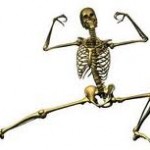 If you think weak and brittle bones are only for the elderly or people with bad genetics –think again!
If you think weak and brittle bones are only for the elderly or people with bad genetics –think again!
As soon as you blow out the candles on your 30th birthday cake your bone mass starts slowly decreasing. Bone loss is easy to ignore because it’s sneaky and silent.
Then for us women, around 50 and amid the hot flashes -it attacks with a vengeance! But whether you are still approaching or have already past the half century mark you can take action NOW to learn how to prevent Osteoporosis and avoid a future of brittle bones and debilitating fractures.
1 out of 3 women over 50 will have a painful fracture due to osteoporosis –Will you be one of them? Wondering how to prevent osteoporosis? Anyone can develop osteoporosis, but women have a much higher risk. Some risk factors you can change to decrease your risk while others, like family genetics, you’re stuck with.
Non-Modifiable Risks
1) Thin framed women with small bone structure are at the highest risk of osteoporosis, because they have less bone mass to begin with.
2) Estrogen deficiency in women following menopause.
3) European or Asian ancestry has higher risks; those of African American and Hispanic descent are lower.
4) Family History –My mother has severe osteoporosis which is one of the reasons I’m vigilant about managing my risk factors.
The Risk Factors You Can Change to Prevent Osteoporosis!
1) Excess Alcohol Consumption: Heavy drinking interferes with the body’s calcium reserves and calcium absorption and can reduce estrogen levels.
2) Vitamin D deficiency: Mild vitamin D insufficiency is associated with higher parathyroid hormone (PTH) production. PTH increases bone resorption, leading to bone loss.
3) Tobacco smoking: Smoking results in increased breakdown of estrogen, lower body weight and earlier menopause, all of which contribute to lower bone mineral density.
4) Diet: Especially Excess sodium, low dietary calcium as well as other essential vitamins and minerals, and imbalance of omega-6 to omega-3 polyunsaturated fats are risk factors.
5) Inactive: Bone remodeling occurs in response to physical stress, so lack of physical activity can lead to significant bone loss. A highly significant correlation between bone strength and muscle strength has been determined.
6) Soft drinks: Some studies indicate soft drinks (many of which contain phosphoric acid) may increase risk of osteoporosis, at least in women. Others suggest soft drinks may displace calcium-containing drinks from the diet rather than directly causing osteoporosis, particularly in teens.
Wouldn’t you just rather prevent a fracture then suffer the painful, debilitating, life style altering after effects of breaking your hip, spine or wrist?
5 Things You Can Do To Decrease Your Risk and Prevent Osteoporosis!
1. Are you a smoker? Give up the cigs for many other health reasons besides your bones!
2. One glass of wine is fine. According to the Dietary Guidelines for Americans, moderate alcohol consumption is defined as having up to 1 drink per day for women. Cut back on your cocktails and vino for the sake of your bones if you’re over the one a day quota.
3. Drink Water, not Soda! Colas leach calcium from your bone and interfere with absorption of bone-building nutrients. Hydrate your skin, hair and body by switching to water instead.
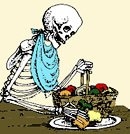 4. Balance Your Diet. Eat plenty of leafy green vegetables that contain vitamin K and get enough calcium and vitamin D.
4. Balance Your Diet. Eat plenty of leafy green vegetables that contain vitamin K and get enough calcium and vitamin D.
Your body is built to get Vitamin D through your skin and 30 minutes of sun exposure to the face, legs, or back at least twice a week should give you enough Vitamin D. Top Calcium rich foods include mozzarella, swiss and parmesan cheese, canned sardines, salmon and anchovies, almonds, yogurt and dark leafy greens.
5. The most important -Move it or Lose It! Regular weight bearing exercise (i.e. aerobics, dancing, strength training, walking, stair climbing) has been consistently proven to aid in building bone mass.
The #1 Thing You Can Do to Build and Maintain Bone Density
While it’s important to get enough bone healthy Calcium and Vitamin D in our diets, food alone won’t build bones. The ONE continuously proven method for building and maintaining bone density is WEIGHT BEARING EXERCISE.
It’s never too late to start a bone healthy exercise program that “loads” your bones. At any time you can send the message to the bones that you’d like them to start growing again by exercising! But not all exercise is equal. The best exercises to prevent Osteoporosis and rebuild your bones are workouts that cause ‘mechanical stress’ on the bone tissues. This stress occurs during muscle contractions when the tendons (which attach muscle to bone) exert a force on the bone resulting in a movement (i.e. bending the knee) or stabilization (i.e. holding a squat position). In short, weight-bearing exercise stimulates bone formation and helps retain calcium in the bones that are bearing the load. Any exercise that places force on a bone will strengthen that bone. This is why there is a highly significant correlation between bone strength and muscle strength.
Get the Best Bone Building Bang from your Workout!
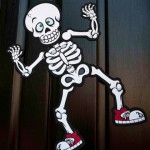 Researchers from the Bone & Joint Injury Prevention & Rehabilitation Center at the University of Michigan found that you can gain bone density from as little as 12 to 20 minutes of weight-bearing exercise, three days a week AND that you can build and maintain bone density at any age! If you have healthy bones, want to increase bone density and prevent bone loss, here’s a variety of exercises to choose from that will do just that.
Researchers from the Bone & Joint Injury Prevention & Rehabilitation Center at the University of Michigan found that you can gain bone density from as little as 12 to 20 minutes of weight-bearing exercise, three days a week AND that you can build and maintain bone density at any age! If you have healthy bones, want to increase bone density and prevent bone loss, here’s a variety of exercises to choose from that will do just that.
• Strength Training – free weights, weight machines, exercise bands
• Plyometrics and Jump Training (only for well conditioned athletes)
• Stair Running or Climbing (going down stairs stimulates bone growth)
• Body Weight Exercises –Squats, Push-ups, etc.
• Jump Roping & Jumping Jacks
• Running or Light Jogging
• Elliptical Trainer, Treadmill or Stair Step Machines
• Hiking
• Backpacking (or walk with weighted back pack on)
• Aerobics and Step Aerobics
• Dancing – especially Zumba, contra dancing, tap dancing, polka and other dances that involve stomping
• Gardening
• Race Walking
• Tennis
• Walking (good activity for inactive people to start with –not as beneficial for active people)
But what are the best exercises to prevent Osteoporosis and encourage bone building in your ARMS?
The arms don’t get nearly the attention they should when it comes to preventing osteoporosis! Don’t neglect your arms, they need bone building too! Most of the exercises on bone strength focus on the legs and I think it’s time that our arms and wrists got the attention they deserve. Building muscle strength and bone density in your arms not only prevents future wrist fractures, but has the fabulous side benefit of giving you great posture and beautiful, sexy, sculpted arms!
Get ‘Michele Obama Arms’ while building bone mass!
Our First Lady, who turns 50 in January, shows us that age doesn’t matter when it comes to staying fit and strong. Did you see her whip out 25 push-ups on the Ellen DeGeneres show? You don’t have to do 25 push-ups either – doing 8 to 10 quality push-ups is a great indicator of strength.
Yoga, Pilates, TRX, weight lifting and body weight supported exercises are great to sculpt your muscles and keep your bones strong. If you avoid arm work outs and weight bearing on your hands because of wrist pain, add a pair of Wrist Assured Gloves to your routine. 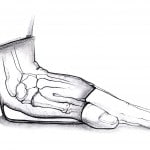 These patented, wrist pain relieving gloves will get you back on your hands again –guaranteed or your money back! Check out our Gym Gloves with Wrist Support. Stay tuned for the next post that gives you a complete bone strengthening, arm sculpting series so you can dance the night away in your sexy, sleeveless dress without that embarrassing underarm jiggle!
These patented, wrist pain relieving gloves will get you back on your hands again –guaranteed or your money back! Check out our Gym Gloves with Wrist Support. Stay tuned for the next post that gives you a complete bone strengthening, arm sculpting series so you can dance the night away in your sexy, sleeveless dress without that embarrassing underarm jiggle!


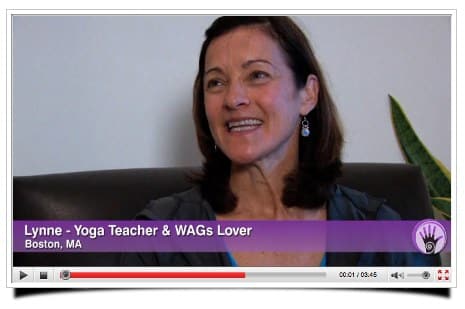
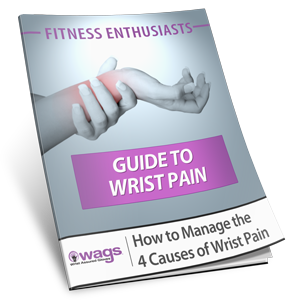

to make bones strong and reverse osteoporosis you should wear the osteoporosisvest
it was made by doctors at Stanford University to help make bone stronger
http//www.osteoporosisvest.com
Swimming is also a great exercise for building bone mass because your arms and legs are moving against the resistance provided by the water. It is a perfect total body exercise that people can do at their own pace with less likelihood of injury than most other activities.
I am recovering from cancer had a breast removed and am on hormone blockers.which have caused brittle bones . So now I have to have calcium drip s . Also my hips are bad and I need hip replacement s . Will Zumba dance classes still be good for me ??
Machel- I’m sorry you are going through all of that. Zumba is a great cardio workout with input to the legs, but it’s pretty fast moving.
You might just start by quick walking and lifting some light weights. Best of luck to you!